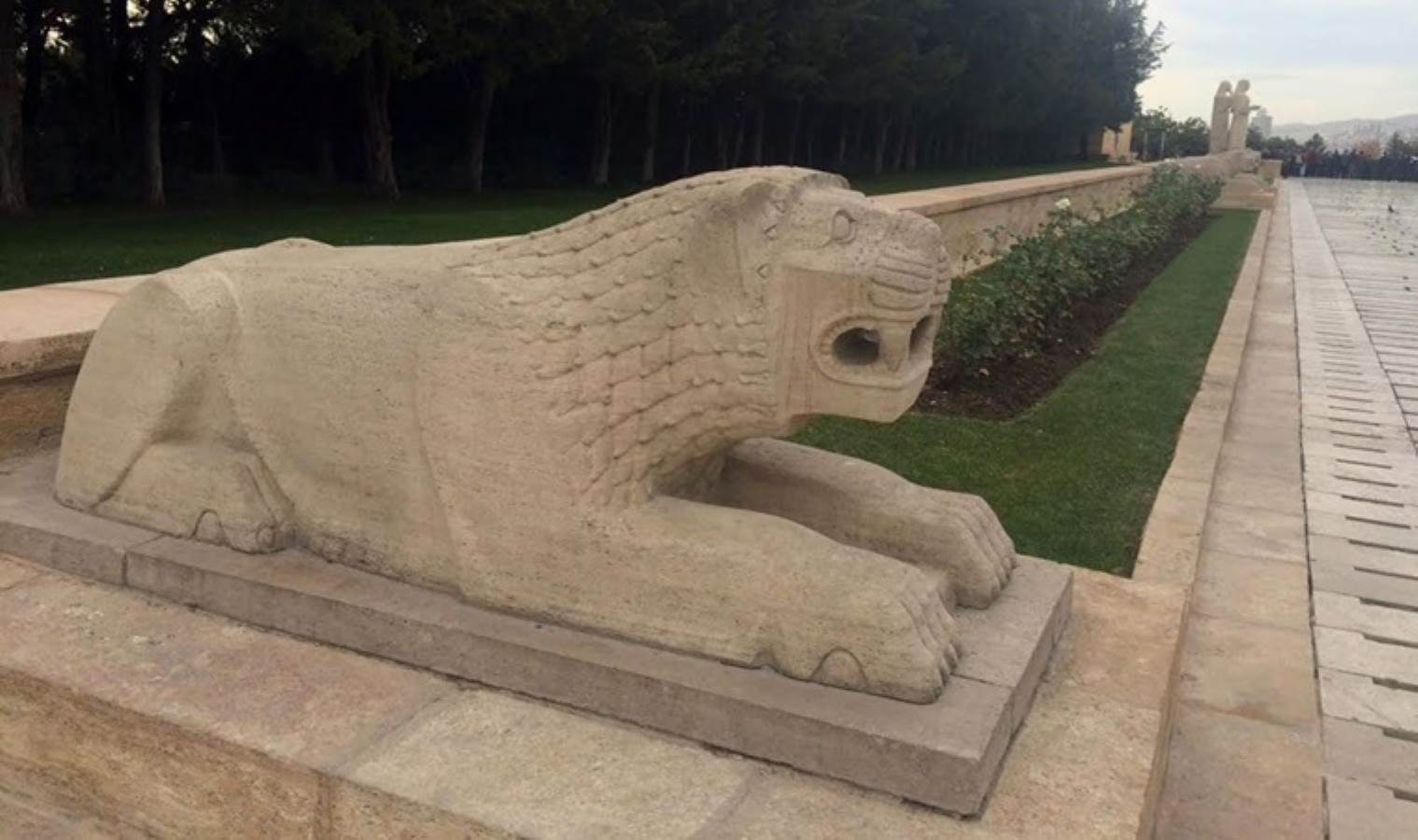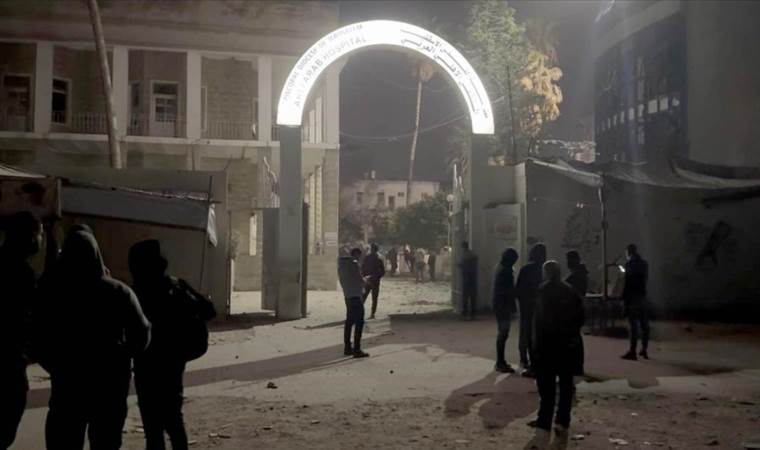A Symbolic Odyssey: Anatolian Civilization's Legacy in Atatürk's Mausoleum
Anıtkabir, the final resting place of Gazi Mustafa Kemal Atatürk, encapsulates symbols from many civilizations that once thrived in Anatolia.

Mustafa Kemal Atatürk, renowned for his military achievements and visionary political revolutions, transcending his era in the political field and founding the Republic of Turkey, has left an indelible mark on history. Even amid war, Atatürk's strategies, characterized by impartial evaluations, earned recognition from opposing commanders, showcasing his intellectual prowess.
This multifaceted approach extended beyond being a soldier or statesman; he emerged as a versatile figure. In addition to his official duties, Atatürk delved into history and language studies, aiming to reinforce the Turkish nation's understanding of "nationhood" The "Turkish History Thesis" and "Solar Language Theory," published in the 1930s, stand as outcomes of these comprehensive studies.
Traces of Anatolian Civilization
Atatürk's approach catalyzed the emergence of historians delving into ancient civilizations like the Sumerians, Hittites, and Akkadians in Turkey's historical field. Simultaneously, endeavours were made to cultivate historical awareness among the public. Notably, naming several neighbourhoods as Iskitler (Scythians), Etiler (Hittite), and Akatlar (Akkadians) in prominent cities like Istanbul and Ankara reflects this sensitivity.

Anıtkabir, Atatürk's final resting place, carries imprints of the people who once thrived in Anatolia, akin to these ancient civilizations. Rasattepe, later known as Anıttepe, the site of Anıtkabir's construction, was part of Beştepe, a cluster of mounds called tumuli formed by the accumulation of earth, often housing graves or cemeteries.
Excavations conducted by the Turkish Historical Society in this region unveiled that the envisioned area for Anıtkabir lay within the second-largest necropolis of the Phrygians after Gordion.
Prof. Dr. Tahsin Özgüç revealed that during Anıtkabir's 1945 construction, he and archaeologist Mahmut Akok discovered two tumuli. Subsequent excavations unveiled these as tombs where the Phrygians cremated the deceased, interring their ashes in earthen vessels.
Özgüç stated that the findings were published in the Turkish Historical Society's Belleten magazine in the same year. The artefacts retrieved from these graves, dating back to the 8th century BC, were preserved at the Anatolian Civilizations Museum.
Symbol of Strength, Courage, and Leadership
A jury convened to oversee the construction of statues and reliefs at Anıtkabir. On January 26, 1952, the jury determined that lion sculptures, to be placed along the same road, as well as trios of sculptures on both sides at the commencement of the tree-lined path, would be crafted by Hüseyin Anka Özkan.
In search of inspiration for the lion statue, Özkan turned to the "Lion of Maraş," displayed at the Museum of Ancient Oriental Art in Istanbul during that period. This lion bore artistic significance as a Hittite artefact.
Aware of Atatürk's particular interest in Hittite history and civilization, Özkan deemed the Maraş lion a fitting embodiment of the spirit of Anıtkabir. The lion, a Hittite emblem denoting strength, courage, trust, and leadership, traditionally graced the entrances of castles or cities, symbolizing the possession of these kingly qualities.

Özkan wasn't the sole artist inspired by the lion motif for Atatürk's tomb. In 1939, amid ongoing discussions about the nature of the tomb for Atatürk, famous Turkish artist Abidin Dino presented his concept featuring a colossal lion design.
Dino's proposal was showcased in Ses magazine on June 7, 1939.
Most Read News
-
 Russian foreign minister says no direct indirect contact
Russian foreign minister says no direct indirect contact
-
 Tanzania bars main opposition party from elections for 5
Tanzania bars main opposition party from elections for 5
-
 China sentences former military industry worker to life
China sentences former military industry worker to life
-
 Taiwan says its 1st tariff talks with US went smoothly
Taiwan says its 1st tariff talks with US went smoothly
-
 Trump excludes computers, phones, other electronics from
Trump excludes computers, phones, other electronics from
-
 EU Mediterranean countries call for stronger efforts aga
EU Mediterranean countries call for stronger efforts aga
-
 South Korea's former President Yoon faces criminal trial
South Korea's former President Yoon faces criminal trial
-
 Talks with Iran 'going OK,': Trump
Talks with Iran 'going OK,': Trump
-
 Ukraine says over 30 killed due to Russian missile strik
Ukraine says over 30 killed due to Russian missile strik
-
 Israel destroys Baptist hospital in Gaza, forcing it out
Israel destroys Baptist hospital in Gaza, forcing it out










